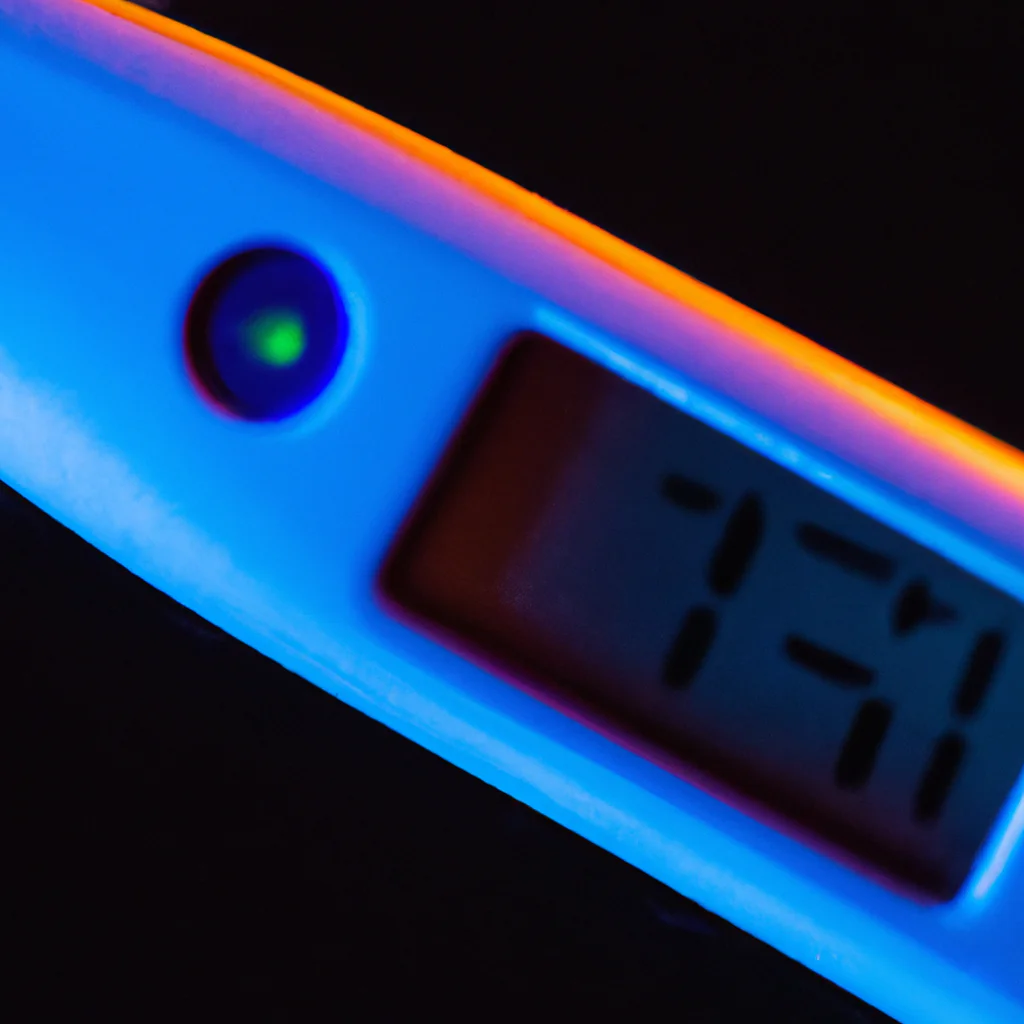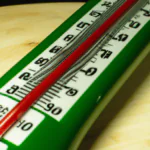Taking a temperature with a digital thermometer can help you stay on top of your health and well-being. But how do you know if the thermometer you’re using is accurate?
It’s important to do your research and make sure you’re using the most reliable thermometer out there. In this article, we’ll look at which thermometers are most accurate, so you can feel confident in taking your temperature. We’ll answer questions like “Which digital thermometer is more accurate?” and “What thermometer do doctors recommend?” by looking at the features of different thermometers. So let’s get started to learn more about finding an accurate digital thermometer!
Table of Contents
Which Digital Thermometer is More Accurate?
When it comes to health, accuracy of readings can make a big difference. It’s why having a reliable digital thermometer device is important – especially if you are looking to take temperature readings when you have a fever.
Vick’s Speedread Digital Thermometer is one of the most accurate digital thermometers on the market, providing readings that are precise and consistent.
But is 98.6 degrees Fahrenheit, prescripted as the “normal” body temperature for over 100 years, correct? Recent studies suggest that varying factors can affect a person’s temperature – some as small as changes in time of day. In fact, one recent study reports that “normal” body temperature may actually be closer to 97.9°F.
Because of this uncertainty in what “normal” body temperature really is, you need a device like the Vick’s Speedread Digital Thermometer to really get accurate results.
- It provides clinical accuracy with every use.
- It reads temperatures within 10 seconds of use and makes taking your own temperature simple.
- Memory Recall lets you check your last two readings at any given time so you can track fever trends.
- It has an automatic shut-off after 10 minutes to save battery life.
Don’t let uncertainty cloud your health decisions – use an accurate digital thermometer like Vick’s Speedread to make sure your readings are up-to-date and correct.
Uncovering the Truth Behind Braun Forehead Thermometer
Do you have concerns about using thermometers to accurately detect a fever? You’re not alone. The Braun No touch + forehead thermometer is designed to give people two noninvasive options for checking their temperature with accuracy and ease—but does it deliver?
Raj Kasbekar, global vice president for regulatory affairs for Kaz, the company that manufactures Braun thermometers, says that the two options offered by the Braun No touch + forehead thermometer have been tested to be clinically accurate within +/- 0.4 degrees Fahrenheit. This degree of accuracy is supported by the American Academy of Pediatrics and other health organizations, which gives users peace of mind that they’re receiving accurate readings.
The thermometer doesn’t require any contact with skin to take a temperature reading. Instead, it utilizes infrared technology and advanced algorithms to detect subtle heat patterns emitted by skin so as to calculate body temperature. It also takes into account factors outside normal body temperature like room temperature and humidity with its Intelligent Fever Alarm system.
The device also offers users other advantages such as faster measurement time and less exposure to contamination risks such as airborne viruses or germs. It’s also simple to use with clear display messages guiding you through your measurement.
Both children and adults can use this device for virtually contact-less temperature measurement, making it ideal for home use or in professional settings such as doctor’s offices.
Furthermore, it has been certified to meet international accuracy standards from the International Organization for Standardization (ISO).
In short, the Braun No touch + forehead thermometer provides users with a convenient and highly accurate noninvasive option for taking their temperature.
Determining if your Digital Thermometer is Accurate
If you’re looking to check the accuracy of your digital thermometer, you’ll need only a few simple items. You’ll need a digital thermometer and some ice water.
Here’s what to do:
- Gather some ice water in a glass.
- Insert the thermometer stem at least an inch deep without having the stem touch the glass.
- Wait for it to register. This usually takes a minute or less.
- Examine the results. If it registers 32° F or 0° C, then your thermometer is accurate.
Be sure to check each of your thermometers against each other and make sure that they agree within 1 degree of accuracy for best results.
Why Test Your Thermometer?
It’s important to test your thermometer regularly as temperature measurements are incredibly important when cooking, baking, and making any kind of recipe. For example, in baking, you don’t want to overbake your cookies! Testing your thermostat will help ensure that you get accurate results every time.
The Bottom Line
Testing your digital thermometer with ice water is an easy way to make sure that it’s accurate. Simply follow the steps above, and you can be sure that your recipes will come turn out perfectly every time.

Oral vs. Forehead: Finding the Most Accurate Thermometer
Forehead thermometers are widely used when it comes to taking someone’s temperature at home. But a 2020 study suggests that they aren’t as accurate as other thermometer types, such as oral, rectal, and tympanic (ear) readings.
A forehead thermometer works by measuring the heat that is emitted from the forehead and calculating an individual’s temperature. This method takes just a few seconds, much faster than the traditional thermometer which needs to be held in the mouth for several minutes.
Though forehead thermometers are fast, convenient, and offer contactless temperature readings, they aren’t as accurate as other types. A key factor affecting this accuracy is that people tend to naturally fluctuate in temperature throughout the day, and these fluctuations can’t always be accounted for with a forehead thermometer.
Oral thermometers, on the other hand, are usually considered more accurate. The process requires placing the device under the tongue and keeping it there for several minutes. This method ensures that the readings are less affected by environmental factors like sweat or humidity.
When making a decision about which type of thermometer to use it’s also important to consider comfort level. Oral thermometers can be uncomfortable for some people – especially if someone is forced to hold it in their mouth for an extended period of time.
To sum up, when it comes down to accuracy Forehead thermometers are less precise than other methods such as Oral, Rectal, or Tympanic (ear) temperature readings. However using them still offers convenience – so depending on your particular needs either one could be ideal.
Thermometers that Doctors Rely On
It can be difficult to decide which thermometer to purchase when you want to accurately measure body temperature. Many doctors recommend iProven’s digital thermometer, a reliable and easy-to-use oral/rectal thermometer that is suitable for people of all ages.
The tip of this thermometer is extremely soft, ensuring that it is comfortable in the mouth or rectum. Though it took a bit longer than other thermometers tested—anywhere between 19 and 23 seconds—the accuracy and convenience of this thermometer make up for the slightly slower reading.
If you are looking for an accurate and efficient thermometer, iProven has some great options. Here are some of iProven’s top features:
- Non-invasive and safe: This thermometer helps you measure body temperature without penetrating the skin.
- Easy to use and read: The device is intuitively designed, making it simple to operate.
- Accurate readings: Results are displayed quickly and accurately.
- Long-lasting: With proper care and maintenance, the device remains in good condition for many years.
If you are looking for reliable thermometers that doctors trust, consider iProven products. Not only do they provide accurate readings in a timely manner, but they are also safe and comfortable to use.
Temperature Taking 101: Are Armpit Thermometers Accurate?
Thermometers are an essential tool for reading a person’s temperature and providing them with information about their health. They can be used in various ways, such as rectally, orally, and axillary. Axillary thermometers, or armpit thermometers, are typically the least accurate of the three.
Whereas the other two methods provide more accurate and direct readings due to location, the axillary method requires a thermometer to be placed in an area surrounded by layers of clothing, blankets, and potentially other fabrics that can influence the outcome.
To make up for this inaccuracy in readings, medical professionals often avg multiple measurements from different locations to get an average of an individual’s temperature. However, when it comes down to convenience or speed of use, the armpit method may be preferred in certain circumstances.
Here are some tips on how to use an armpit thermometer properly.
- Ensure proper placement of the thermometer by firmly grasping both your arm and elbow against your body.
- Wait a few minutes after removing excess clothing layers before using a thermometer.
- Gently press the thermometer against your skin without pushing too hard.
- Hold still during the entire measurement period even after you hear a beeping sound.
Most importantly, axillary thermometers should always be used in combination with additional methods to ensure accuracy. People should check with their medical provider if they have any concerns about their temperature measurements.




